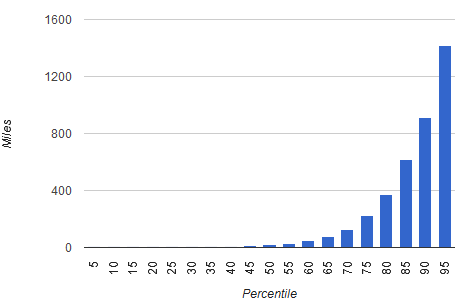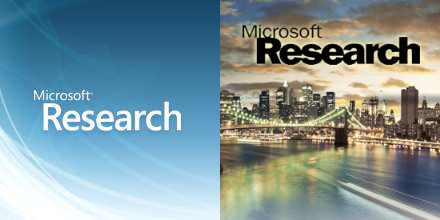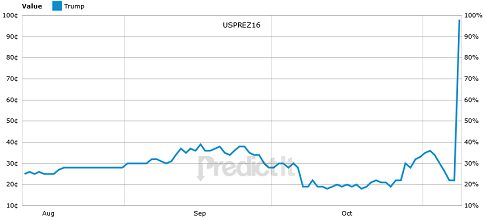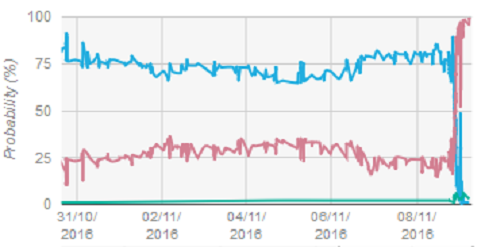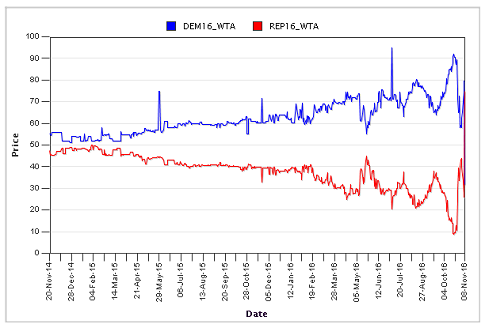Apply behavioral insights, measure impact, and help make the US Government work for people
BE A FELLOW WITH THE OFFICE OF EVALUATION SCIENCES
The Office of Evaluation Sciences (OES) is currently accepting applications for fellowships beginning in October 2017 in D.C. Based at the General Services Administration, OES is a team of applied researchers tasked with building insights from the social and behavioral sciences into federal programs, and testing and learning what works. OES partners with federal agencies to evaluate the effectiveness of new evidence-based interventions on program outcomes and provides agencies evidence to make informed programmatic decisions.
Over the past two years, OES has completed over 30 randomized evaluations with agency partners. OES has made major strides serving agencies and improving federal programs by applying and testing the impact of behavioral insights on a diverse range of agency outcomes. Dozens of agencies have joined this effort, creating innovative partnerships to tackle some of the most pressing challenges in the United States and abroad. OES has rigorously tested insights on diverse agency priorities such as promoting retirement security, responding to climate change, assisting job seekers, helping families get health coverage and stay healthy, and improving the effectiveness and efficiency of Government operations. For more information on our portfolio to date, go to https://oes.gsa.gov/work/.
Fellowship Details
OES is accepting applications for full-time fellowships starting in October 2017 based at the General Services Administration in Washington DC. Most Fellows join OES on-loan from academic, nonprofit, or government offices on either a reimbursable or non-reimbursable basis, typically for one to two years. Fellows have come from a variety of universities (e.g. City University of New York, Northeastern University, North Carolina State University, Reed College, University of Arizona, and University of Washington), non-profits (such as policy think tanks), and federal departments (e.g. Department of Education, Department of Agriculture, and Housing and Urban Development Department). Other types of federal appointments may be offered on a limited basis.
The OES team combines academic and research expertise with experience implementing and evaluating evidence-based interventions in complex settings. Responsibilities of OES Fellows include:
- Understanding agency objectives and priorities, identifying opportunities to translate findings from the social and behavioral sciences into concrete recommendations.
- Driving implementation on 3-5 projects at a time, including collaborating and communicating with agency partners to ensure that: intervention ideas and the pilot design meet agency goals; field experiments are implemented as planned; and the implications of results are clearly understood.
- Working directly with agency collaborators to design and rigorously test interventions.
- Performing data analyses and interpretation.
- Distilling findings into reports, policy memos, and academic publications.
- Assisting, as needed, on additional projects being managed by other team members.
- Attending weekly team meetings, providing updates on project status, and being generally available to collaborate on and contribute to internal team tasks.
- Representing the team by attending and presenting at internal government and external talks, conferences, and workshops.
Applicant Profile
OES team members must possess a unique set of technical and professional skills. This includes knowledge of at least one field within the social and behavioral sciences, the ability to creatively apply research knowledge within the federal government setting, the ability to design and manage the day-to- day operations of a large operational field trial, and exceptional communication and interpersonal skills
OES is currently recruiting for the following two roles with associated experience:
- Fellows have substantial expertise in the social and behavioral sciences field. Typically they are researchers with a PhD and publication record in a social or behavioral science field (e.g., economics, psychology, political science, statistics, sociology, public policy, business, etc.).
- Associate Fellows are typically pursuing a PhD in the social and behavioral sciences field, have recently completed a PhD or post-doc, or have a Master’s Degree plus two or more years of relevant experience.
Additionally, applicants must possess:
- General knowledge of applied social and behavioral sciences and specialized knowledge of at least one domain of study within the social and behavioral sciences.
- Ability to think creatively about how insights from the social and behavioral sciences can be translated into concrete interventions that are feasible within specific Federal programs.
- Curiosity and willingness to learn about federal agencies and their unique practical and regulatory constraints.
- Knowledge of evaluation design and analysis strategies, such as randomized controlled trials.
- Statistical competency in at least one data analytic programming language (e.g., R, Stata, Matlab, SAS, Python).
- Ability to effectively explain technical concepts to broad audiences, orally and in writing.Strong and concise writing skills, including under tight deadlines. Excellent project management and organizational skills.
- Flexibility, self-motivation, and the ability to manage multiple tasks efficiently in a team
Preferred qualifications include one or more of the following:
- Significant experience conducting randomized evaluations in field settings.
- Experience working with government programs, policies, operations, and/or data.
- Advanced statistical and data skills, including experience handling large data sets.
- Professional design skills (e.g. interaction design, visual communication design, etc.)
- Expertise in one or more U.S domestic policy sectors.
Application Details
Applicants may apply online via https://oes.gsa.gov/apply/. The deadline to submit is 11:59 p.m. EST Sunday, January 15, 2017. Finalists will be invited to an interview process that will include a writing exercise, up to two stages of interviews, and an in-person research presentation. We expect final decisions to be communicated to candidates by mid-March 2017.




